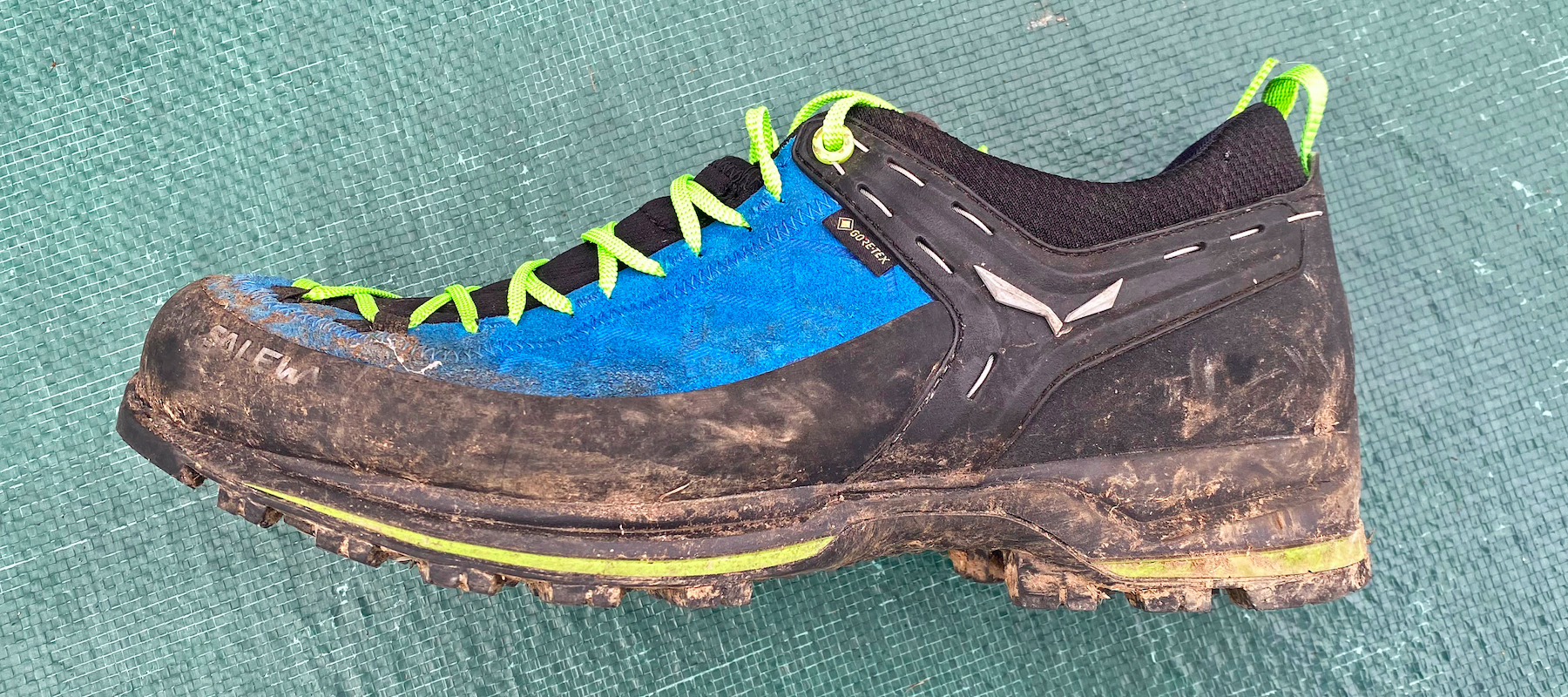Advnture Verdict
The Salewa Mountain Trainer 2 Gore-Tex offers everything you need in footwear designed for rocky routes and technical scrambling adventures, from rigidity and foot protection to really good grip. On top of that, there are several flourishes in the design of these shoes that make them perfect for serious scramblers and alpine explorers, including the via ferrata tread zone and the super-supportive 3F system. It’s certainly not the lightest approach shoe out there, but that heft is a perfectly acceptable payoff for the comprehensive degree of protection they offer.
Pros
- +
Robust build
- +
Reassuring rigidity
- +
Solid toecap
- +
360-degree protective rand
- +
Gore-Tex lining
- +
Decent grip
Cons
- -
Non-integrated tongue allows ingress of grit
- -
Weak laces
- -
11mm heel-to-toe drop won’t suit everyone
- -
Relatively heavy
- -
Run quite warm
You can trust Advnture
Salewa Mountain Trainer 2 Gore-Tex: first impressions
Despite the Salewa Mountain Trainer 2 Gore-Tex’s slightly misleading name – and the fact it’s listed under “hiking shoes” on Salewa’s website – it’s immediately obvious this is a classic approach shoe.
• List price: $229.95 (US) / £190 (UK)
• Weight (per shoe): 458g / 16oz
• Materials: Upper: 1.6mm suede leather, 3F system with steel cables, 360° full rubber rand; Lining: Gore-Tex; Midsole: Expanded PU; Outsole: Vibram MTN trainer EVO
• Colors: Men’s: Blue Danube & Fluo Green / Black & Carrot / Brown Autumnal & Black; Women’s: Black & Bungee Cord / Blue Dark Denim & Fluro Coral
• Compatibility: Approach routes, scrambling and hiking
That’s not to say you couldn’t or shouldn’t wear it for gentler hikes; it’s just that it might be a bit on the heavy and stiff side for low-level trail trekking. With its long list of technical features, however – including rigidity along the shank, full-foot protection, Gore-Tex membrane and a Vibram outsole with a specially designed zone for use on via ferrata – it is very clearly at home in the high, rocky peaks.
Aside from the elements mentioned above, one of the signature features of this shoe is Italian alpine experts Salewa’s “3F system”, whereby a thin, steel cable runs from the top lace eye around the back of the heel. Salewa say this is designed to connect the instep area with the sole and heel for improved levels of support and flexibility.
Salewa Mountain Trainer 2 Gore-Tex: in the mountains
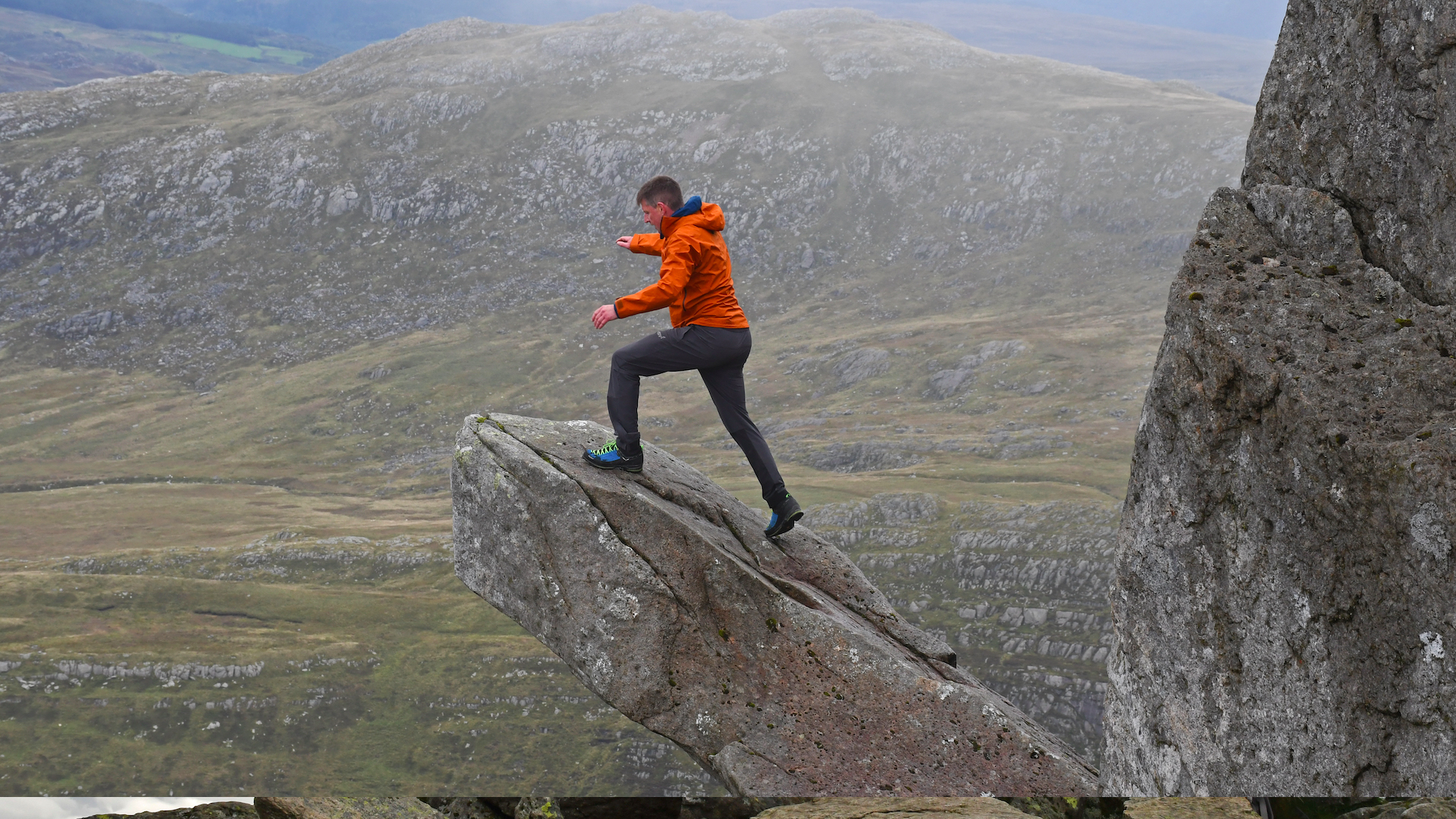
I’ve been testing the Salewa Mountain Trainer 2 for over a year now, in a range of wildly different landscapes and conditions. It can be worn as a hiking shoe, and I have used it in this way several times, but as mentioned, sauntering along country and coastal trails is not what this shoe has been designed for, and there are far better walking shoes for that kind of caper.
But in the mountains, when edging around rocks and while peak bagging and scrambling, this approach shoe absolutely excels. It was especially in its element when I was scrambling up technical routes on Tryfan in Snowdonia, North Wales, and climbing the jagged twin peaks of Glyder Fach and Glyder Fawr.
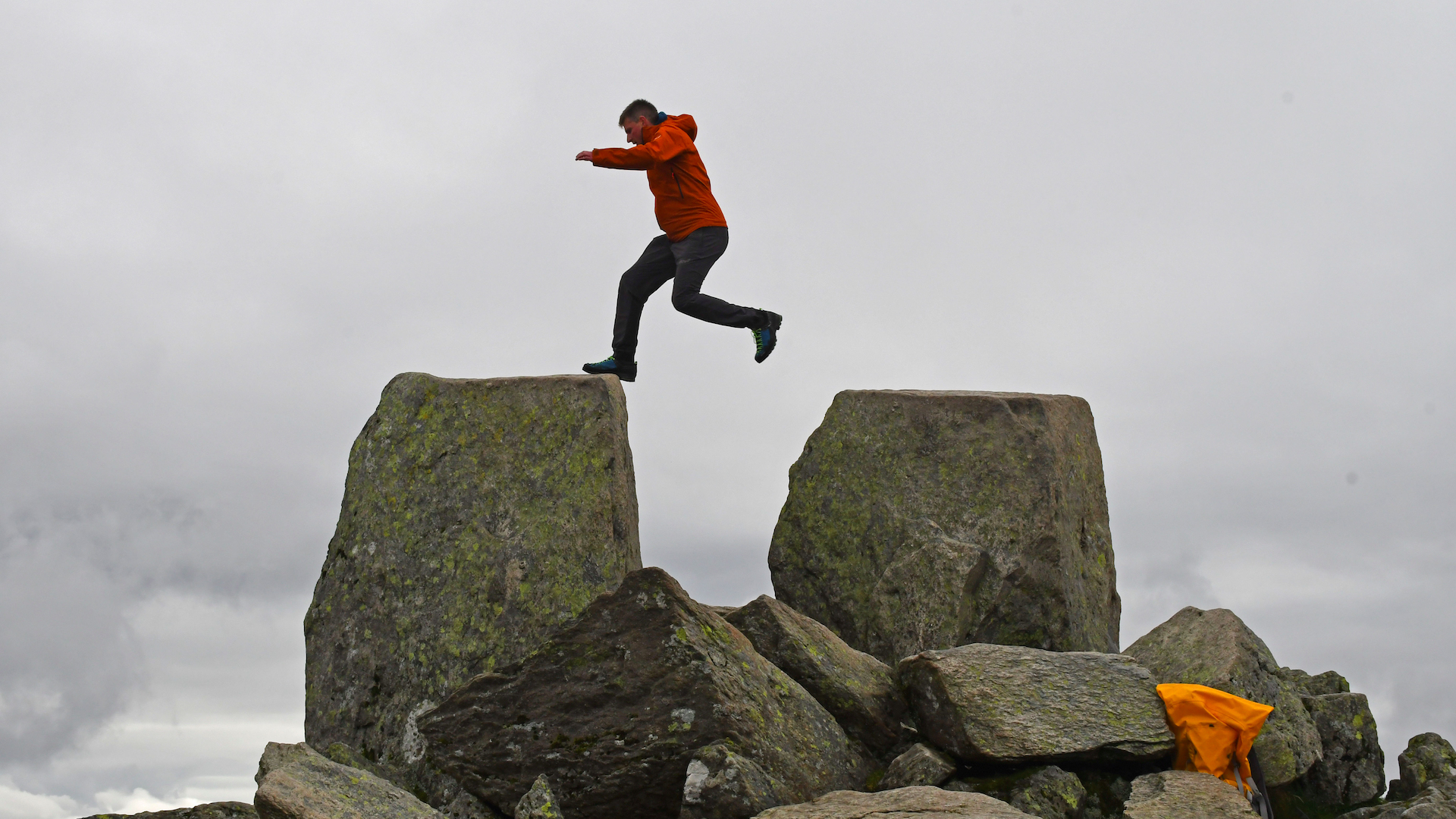
On such adventures, while I was scrambling over exposed rocks on high routes, I particularly appreciated the excellent level of rigidity this shoe has along its length, which really saved my legs on several occasions. The advanced toe protection meant I could securely jam my feet into fairly narrow holds, and the stiffness of the shoe combined with Salawa’s 3F system – which supported my heel and instep – enabled me to push up to the next hold.
The full 360º wraparound protective rand is also really good for keeping your feet safe and secure in such challenging terrain, and the super-substantial toecap protected my pinkies from stubbing and crushing injuries on multiple occasions. On colder trips later in the year, they also meant I could kick snow steps into ice without breaking my toes or blackening my nails.
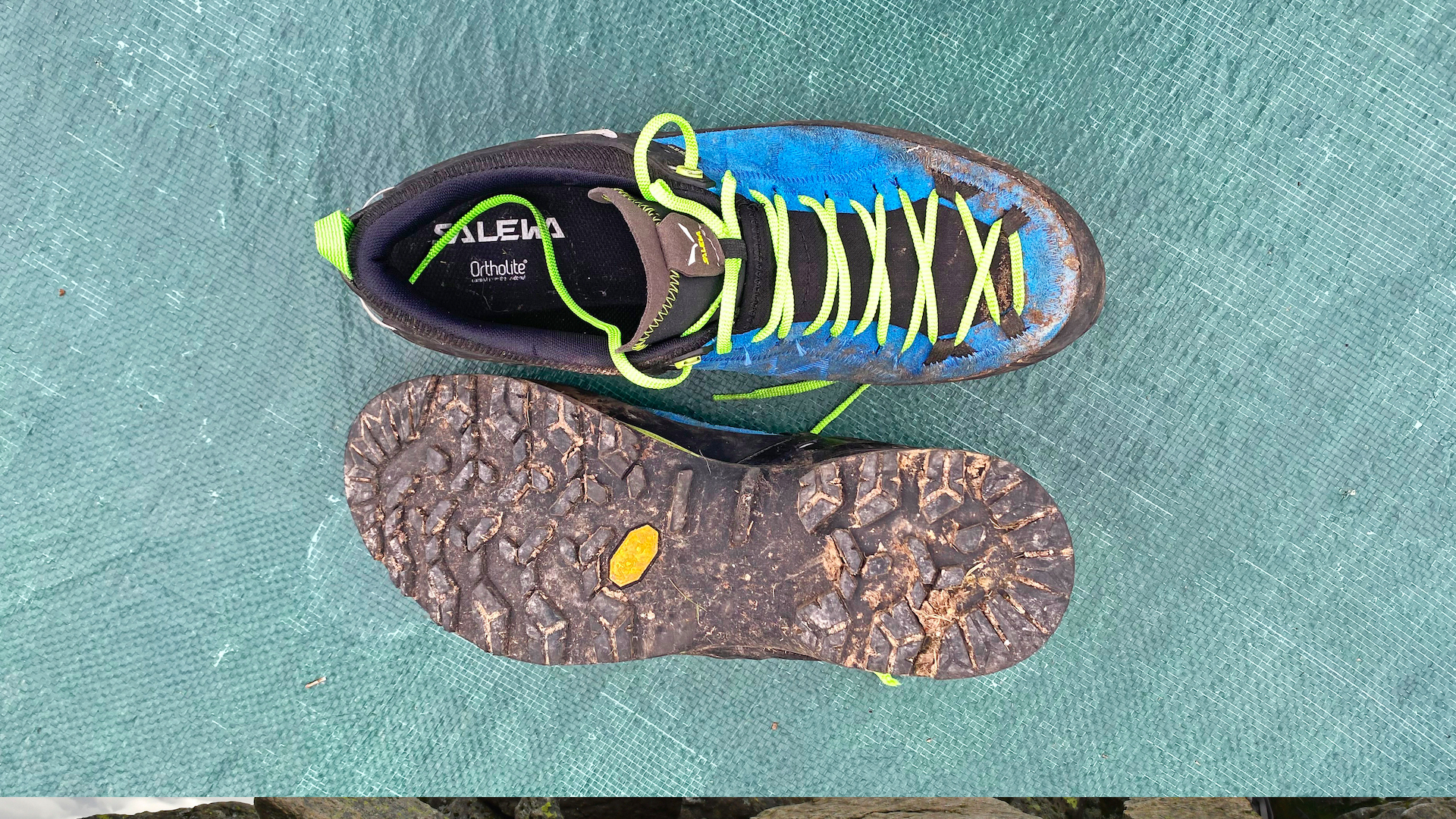
I found that the midsole offered reasonable levels of cushioning, while the Ortholite footbed helped with comfort. Importantly, the grip on the Vibram outsole is good on a variety of ground, with pronounced but intelligently spaced lugs that don’t collect too much mud when conditions underfoot are soft. These are specialist shoes, designed in Montebelluna in Italy (the epicenter of the world’s alpine footwear industry), and the sole even has a special tread zone for climbing via ferrata.
The lugs are made from hard rubber, which will last for a long time even with heavy use, but on smooth, wet rock they can slide, so you need to be careful. This certainly made things somewhat exciting when I came to attempt the famous jump between Adam and Eve rocks atop Tryfan. I managed it however, without falling off the precipitously steep-sided peak, even though a light rain had been falling and conditions were slick. In the end, the shoes gave me enough confidence to do the leap of faith a couple of times in each direction (just to make sure I really did earn the freedom of the mountain, according to folkloric promise) without mishap. And they then went on to perform brilliantly on the subsequent scramble up Bristly Ridge to the summit of Glyder Fach, and then the downclimb to the Pen Y Gwryd hotel.
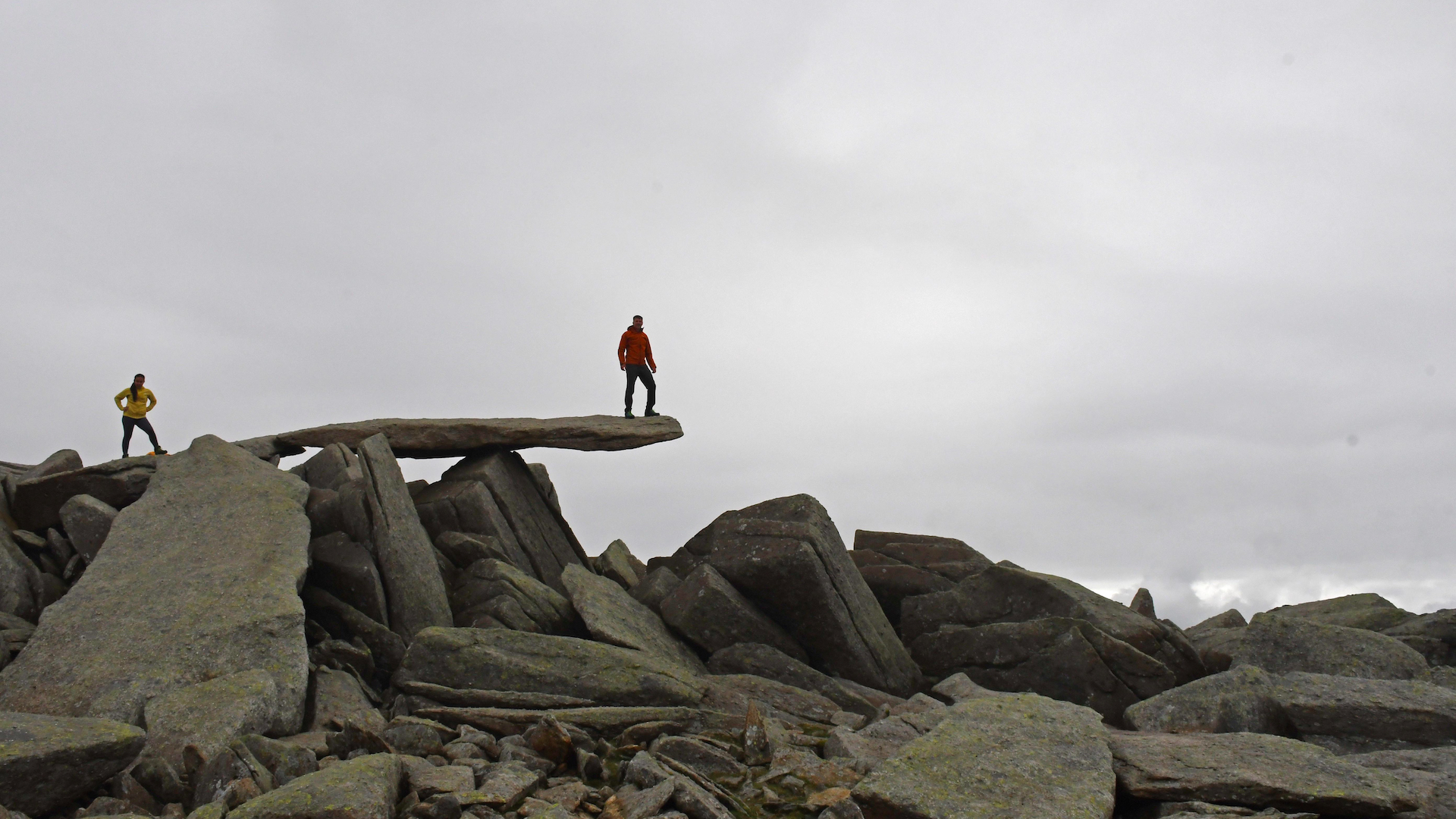
Most of my mountain adventures in these shoes have taken place in spring, winter and deep into fall, in sometimes cold and wet conditions. I’ve found that The Gore-Tex membrane provided brilliant, breathable wet weather protection, and I feel that these shoes definitely work best outside of summer (they can feel hot and heavy in the middle of the year).
My only real complaints are that the non-integrated tongue can let in grit, and the laces themselves are a bit of a weak point (easy to replace, but hard to find in the funky colors they originally come in).
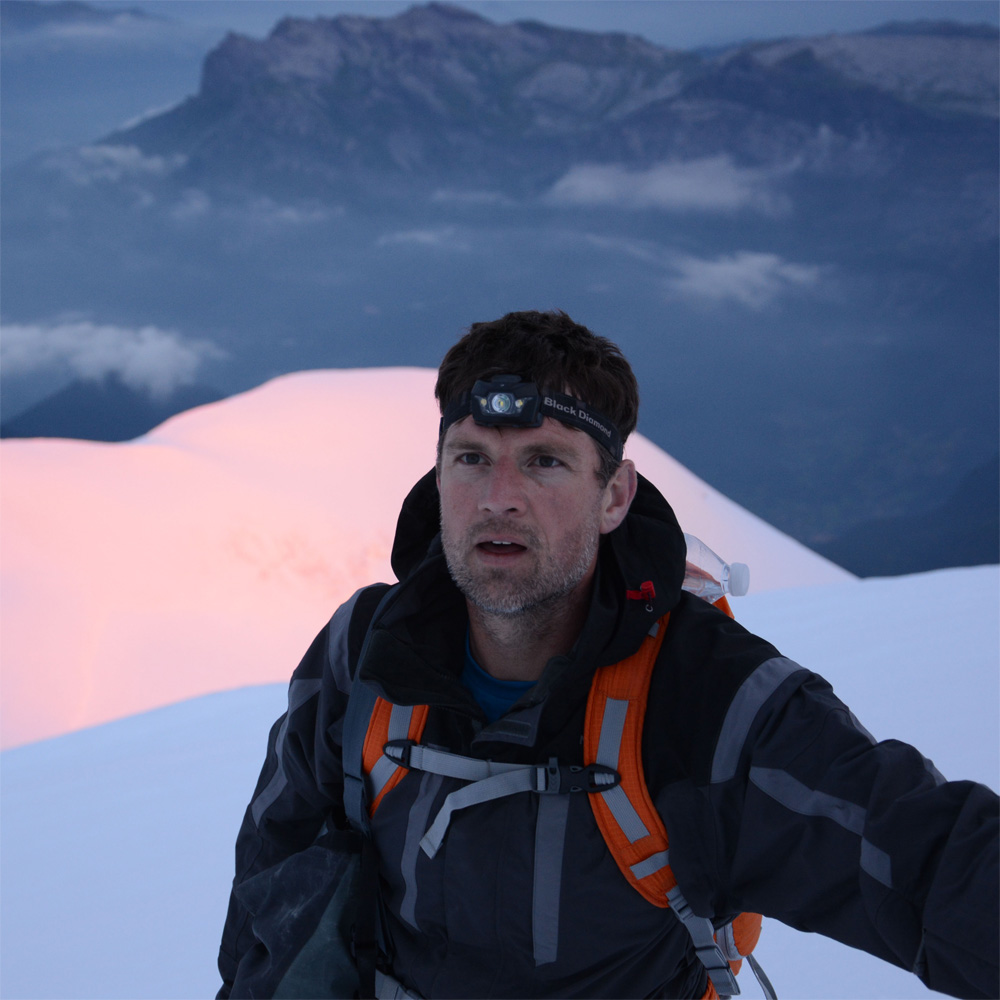
Author of Caving, Canyoning, Coasteering…, a recently released book about all kinds of outdoor adventures around Britain, Pat has spent 20 years pursuing stories involving boots, bikes, boats, beers and bruises. En route he’s canoed Canada’s Yukon River, climbed Mont Blanc and Kilimanjaro, skied and mountain biked through the Norwegian Alps, run an ultra across the roof of Mauritius, and set short-lived records for trail-running Australia’s highest peaks and New Zealand’s Great Walks. He’s authored walking guides to Devon and Dorset, and once wrote a whole book about Toilets for Lonely Planet. Follow Pat’s escapades on Strava here and Instagram here.
